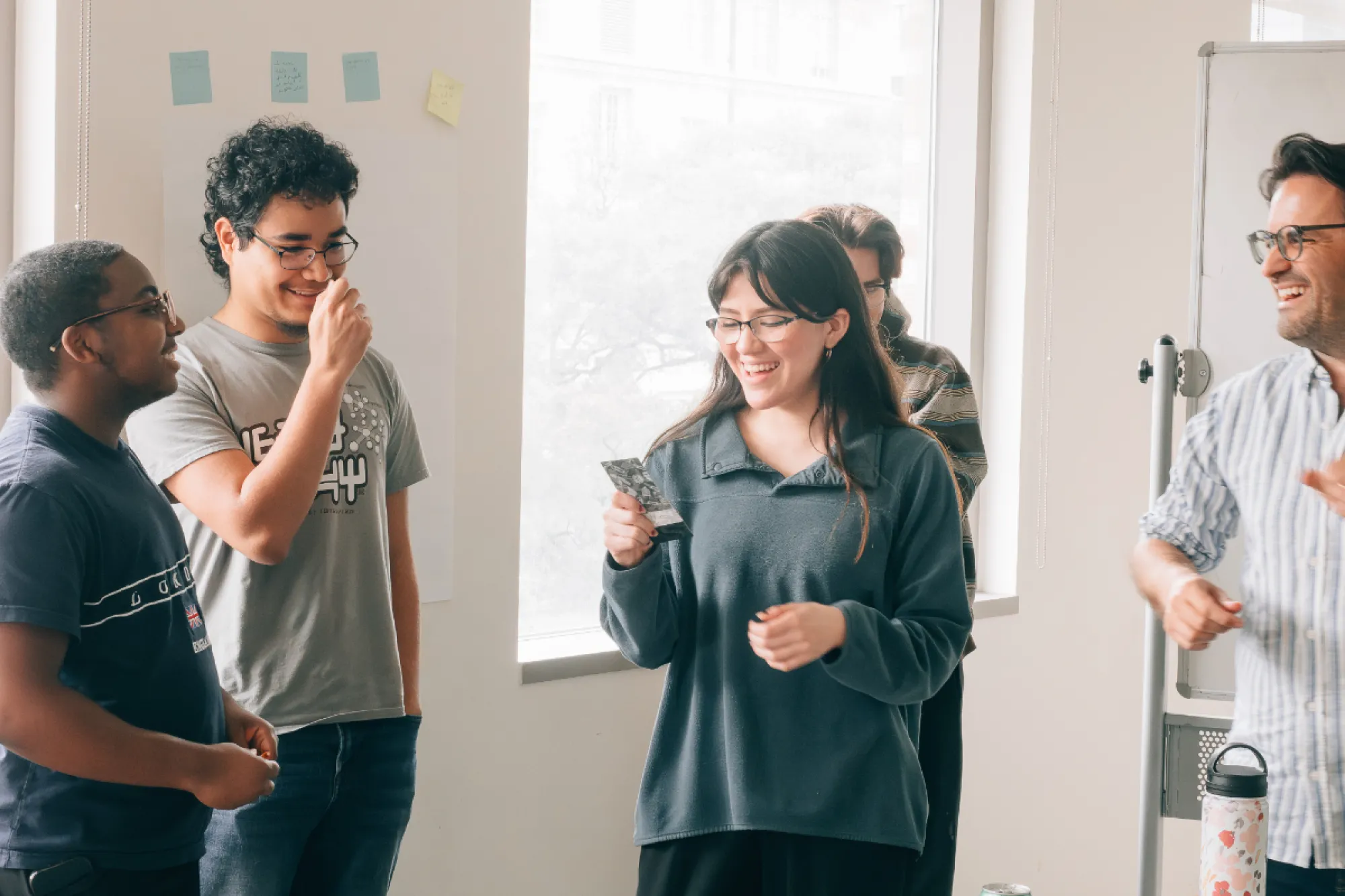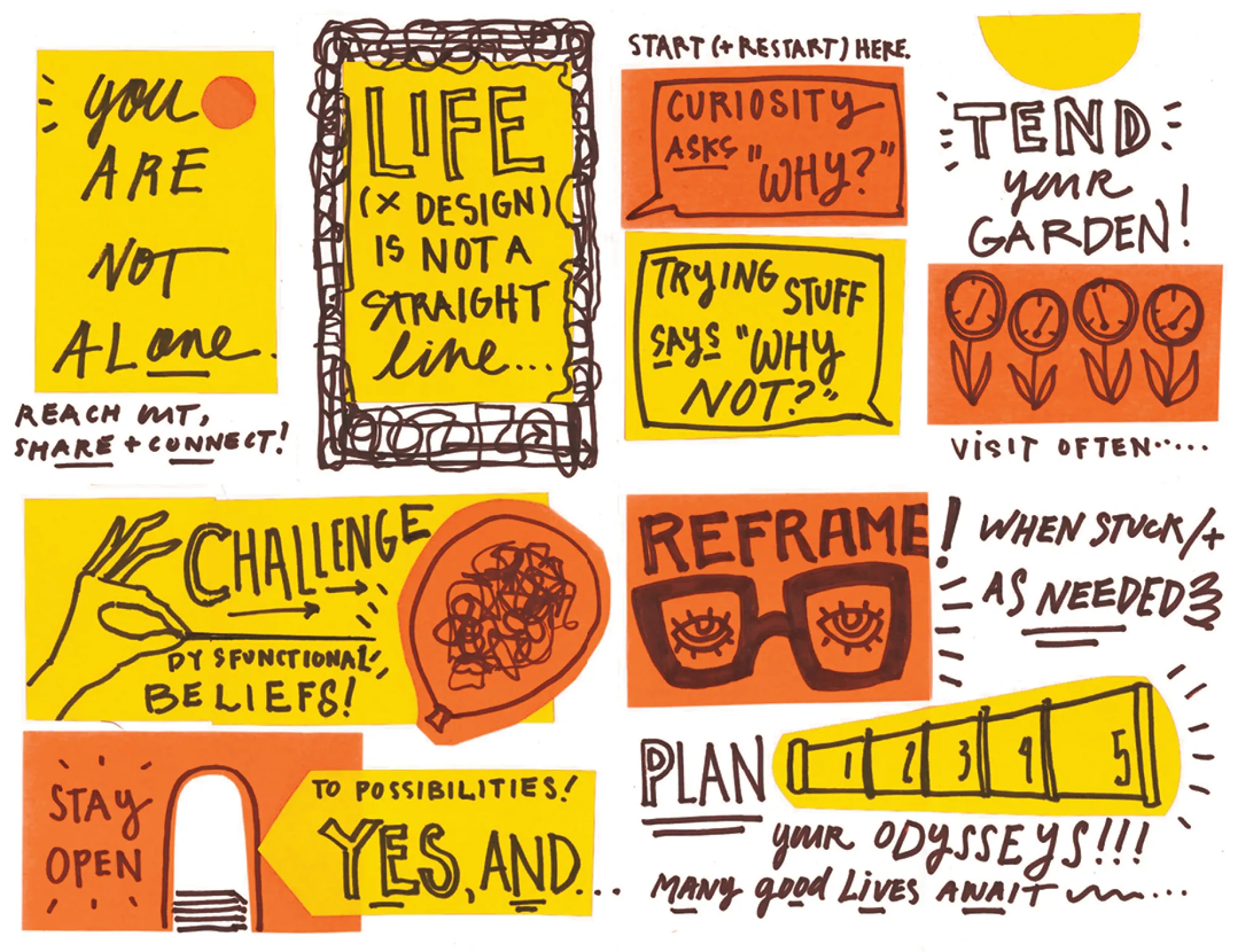Bringing the Future Into Focus
College integrates life design curriculum into undergraduate experience to help students take more control of their career pathways

by Alicia Dietrich
Studio Art student Sophie Guinn thought she might want to go into art consulting or work at an auction house when she was thinking about where to go to college. In fact, she chose The University of Texas at Austin over the University of Saint Andrews in Scotland because UT Austin offered both studio art and art history programs, and she thought this combo would better position her for that career pathway.
She knew she’d probably like to work more on the business side of the art world, but after interning at an art gallery, she realized that wasn’t the right path for her, and she wanted to open her mind to other opportunities in the art industry. Heading into her final semester of her senior year, she was still figuring out how to answer the inevitable question she was being asked: “What are you going to do with your art degree after college?” As she was finalizing her schedule for that semester, she stumbled on a new elective being offered: FA 306: Career Development in the Arts.
“I thought, oh, that’s interesting,” Guinn said. “I still need help with my résumé and all that kind of stuff. I thought, OK, let’s try it out.”

FA 306: Career Development in the Arts was a brand-new course created to teach students skills around life design, a framework that can help students navigate their college experience and guide them through visualizing possible futures post-graduation and throughout their lives and careers. The class focuses on teaching students about four fundamental concepts of life design:
Be curious.
Get connected.
Try stuff out.
Tell your story.
Through practical exercises, the class helps students with career exploration, refining their résumés and cover letters, searching for jobs and internships, and building a career. Students in the class create a career plan based on their experiences with specific exercises that help them explore career possibilities that align with their personal values, interests, personality and skills.
The concept of a life design class originated at Stanford University in 2010, but other universities have taken the concepts and adapted them over the past 15 years. Nathan Langfitt, the director of Career and Life Integration at UT Austin, taught FA 306 this spring in the College of Fine Arts as a pilot program. He’s using what they learned to help the University expand the life design curriculum across campus.
“We’re trying to move out of a transactional model and into a transformational model,” Langfitt said of the program. “Career services for the last 100-plus years has meant we help students with résumés. We help them look for a job. We help them to get ready for that interview, and then we kind of say, ‘Have fun. Good luck.’
“The program that we’re building here and piloting in the College of Fine Arts is all about teaching students to think deeply, to be less afraid to try things out. We’re teaching students to be resilient and adaptable, and we’re helping them to feel really empowered in their career search so that they are the ones who have the tools to not only find career success after graduation, but find career success when they inevitably have to pivot again in five and 10 years.”
The College of Fine Arts has added four new staff positions to support the integration of the life design program across the undergraduate experience for students in the college. Maria Meinert (M.F.A., Design, 2023) joined the college in 2025 as life design coordinator, and she will teach a one-credit version of the course during the fall and co-teach FA 306 in spring 2026 with Student Career Success Coordinator Morgan Laner. Meinert and the Center for Creative Economies have been working with each department in the college to look for opportunities to integrate a life design module into a required class in each department for first-year undergraduate students.
Although the courses are open to all students, organizers especially hope to attract students in Bachelor of Arts (B.A.) majors, which are more open and flexible than the pre-professional Bachelor of Fine Arts (B.F.A.) and Bachelor of Music (B.M.) majors.
A core focus of the class is getting students to move past thinking about an idea and to practice doing to test the idea out, especially around getting them to feel more comfortable about connecting with new people to explore their curiosities. The concept of in-person “networking” can feel intimidating to many students, so the class helps them practice those skills before reaching out to a potential professional connection.
“One of the things that this curriculum really focuses on is what we call a mindfulness of process, which is this idea of don’t just focus on where you’re trying to go. Focus on what you can learn from all the steps along the way,” Langfitt said. “When we set them up for the coffee date project, first they develop a series of curious questions, and then they practice them on a peer. And then in round two, they practice them on a UT on-campus mentor — so that could be a faculty member. That could be their academic adviser. That could be anybody. And then third and finally, after weeks of practicing this, they finally go out into the wild and talk to somebody that they found through LinkedIn.”
The students also spend time dispelling common myths around being an artist in the world (e.g., success in their field can only look like one very specific thing) and challenging dysfunctional beliefs (e.g., I’m doomed to be a starving artist if I want to pursue my passion). The class created a strong sense of community and a safe space for students to practice talking about their fears and then working together to find ways to move through and past roadblocks.
Guinn had concerns about job applications, and she thought that if she didn’t have every single qualification, then she couldn’t apply for the job. She brought it up in the class and had a big “aha!” moment.
“I learned that if you have 65% of the qualifications, you should apply for the job because 100% of the qualifications are in an absolute perfect candidate, which they will most likely not find,” she said. “Or you’ll learn how to do those things on the job. It doesn’t mean that you can’t apply for the job just because you don’t have every single thing on there. I realized that I can apply for more jobs than I think I can.”
Guinn said that a reframing exercise in the class offered a lot of validation. When a student expressed a fear, they would write it down, and then they would gather as a group and brainstorm about the problem and how to get over it or help with it by contributing Post-Its to the wall to visualize the feedback. The exercise was so meaningful that Guinn kept the Post-its. She walked away with good ideas about how to move forward and feeling supported by her community and her classmates.
“Everything is going to be OK future-wise,” said Guinn, who planned to move to London and begin applying for jobs after graduating in May. “I feel like we’re all going to find our place, career paths and journeys, and I feel like we’re going to end up where we need to go.”

